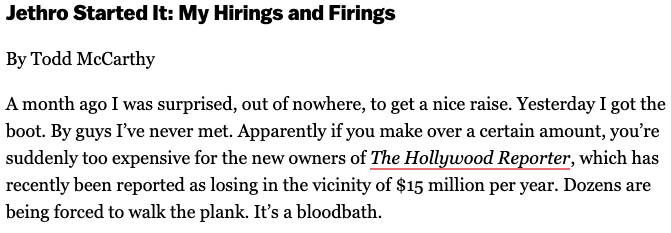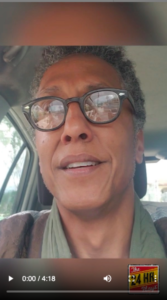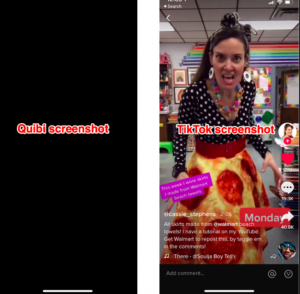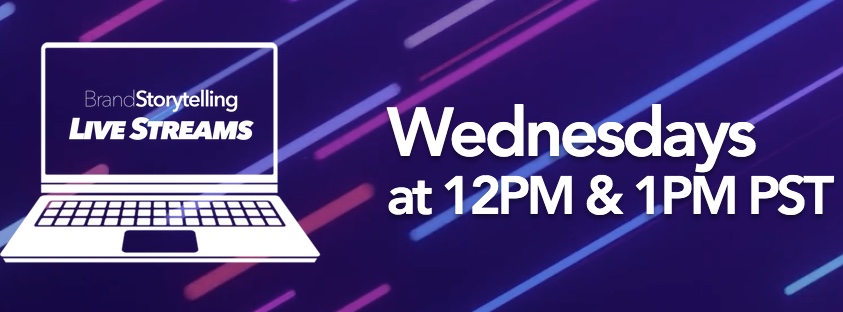
Some questions on my mind these past few days of quarantine, in no particular order.
What’s Up With Online Film Festival Timing? – While CPH:DOX had a seemingly successful online festival (see below), I have serious questions as to how this works for other fests. But my number one question remains – in a virtual world, why are all of these online festivals taking place at different time periods, dictated by old systems built to avoid conflict, when they could all take place at the same time and amplify their message? Most of them are showing the same films anyway, and even with their idiosyncrasies built in, it seems to me that it would be better to move your dates, slow down a bit and explore the power of collaboration and joint-marketing instead of just plowing ahead.
Whither the Trifecta/Fall Festivals? – I’ve heard rumors that the Trifecta (Venice, Telluride and Toronto) Festivals plan to take place in some form this September, along with many regional Fall film festivals. But I give you one quote: “There have been 10 influenza pandemics in the past 250-plus years—two started in the northern hemisphere winter, three in the spring, two in the summer and three in the fall. All had a peak second wave approximately six months after emergence of the virus in the human population, regardless of what initial introduction occurred.” (emphasis mine), This comes from the National Academies of Sciences, Engineering, and Medicine‘s expertly named report – Rapid Expert Consultation on SARS-CoV-2 Survival in Relation to Temperature and Humidity and Potential for Seasonality for the COVID-19 Pandemic (April 7, 2020). Let’s do the math: March+6=September. So either these festivals get cancelled or we show up there and risk dying. That math doesn’t work – and your potential attendees know it, even if you and your board don’t, Fall festival folks.
| Where’s the Limbo-Film Social Media – There are hundreds of films stuck in limbo after the cancellation of SXSW, Tribeca and other major festivals. For a variety of reasons, I was looking up many of them on social media this past week. Without naming any names, I was surprised that by my estimates, more than 90% of these films have zero presence on social media – not a Facebook page or Instagram account, much less anything on other platforms. Isn’t this 2020? Aren’t we trying to build audiences? Have you checked out the social media presence of any distributor not named A24 or Neon lately? Do you think they’re going to build your audience for your virtual premiere? Aren’t many of us stuck at home with some time? Isn’t this a good time to get creative and build an audience? To wit: |

When do we get our IGTV Films? I spent two hours the other night watching the brilliant #24viralmonologues on IGTV from the folks at the 24Hr Plays. In brief, a playwright sends a short script to an actor who performs the piece by themselves, on their phones, and submits the results, which are entered into the contest. Who cares about the contest. It works. It’s brilliant. It’s pretty much a new art-form, and it could be duplicated and turned into a film. Or a campaign for a limbo-film. Why aren’t we seeing more of these? Am I missing a treasure-trove of them? If so, please send them my way, or start making them now, filmmakers. Here’s my favorite: Motherfuckers by Stephen Adly Guirgis, performed by Andre Royo. And yes, I am hinting that limbo-films should copy this strategy.
And how are people finding time to stream movies with all of this new content? Yes, streaming hours have skyrocketed. But I can barely find time to turn on Netflix, much less think about any new service, when I have so much new online content to watch elsewhere. Not just the IGTV #24hrviralmonologues, but Alvin Ailey dancers in #aileyallaccess, or @NewYorkNico‘s #bestNYaccent or even print stuff like Quentin Tarantino’s Movie Reviews on the New Beverly Cinema’s website. or Orchestras around the world recording Beethoven with every musician at home, and I haven’t even mentioned all the stuff like #goodnightwithDolly on TikTok, gaming, etc. It was an attention economy before this virus hit, but it’s even more of one now.
Can Quibi Survive its horrible launch? I’m a known Quibi skeptic, but the response to their launch was so bad that it almost made me flip to being a supporter, I mean I love indie films which means I’ll always root for the underdog. Here are my favorite two quotes: Bob Lefesetz: “the kids can smell a rat.” And “it’s chopped-up television. Do you think that’s appealing?” Or try this one from Spencer Kornhaber in The Atlantic in a piece titled – Quibi is a Vast Wasteland: “After having spent a day and a half gorging on “quick bites,” I have zero shows to enthusiastically recommend. What I instead have is the sort of soul-deep burnout I haven’t felt since middle-school sick days spent on the couch with Regis Philbin.” Ouch. And don’t get me started on the fact they disabled the ability to share content– on mobile – in 2020 – jeesh. They claimed 1.7M downloads in week one- which no one believes, but is definitely less than they’d hoped to receive (but more than any indie/arthouse film app ever got). You can’t make this shit up, but you can imagine what could have been built with a Billion dollars instead of this garbage.

If people aren’t flocking to VR headsets for entertainment now, when exactly is that going to happen? I can find lots of thought-pieces about how we might switch to VR now, but very little evidence that anyone is finding time to bother with VR for entertainment, and more reports about what isn’t working. Tribeca’s Immersive program, Cinema 360 launches tomorrow, and maybe they’ll prove this wrong, but it’s looking like people prefer drinking virtual happy hours on Zoom over actual VR.
How do the Trades survive an Academy-awards advertising slow-down? Valence Media already announced major cuts at the Hollywood Reporter today. That same report had them losing $10M a year before the virus hit. The dirty secret of all of the trades has been that they make the majority of their revenue from Academy awards campaigns each year – it ain’t the news, folks. So with the Academy Awards themselves in question, and the Summer block-buster season taking a major hit, and as I mentioned above, a possible issue with Fall launch festivals, how does this work for the trades? Sure, there will be a massive push for whatever films can launch this Fall, but is that going to make up for the lost revenue before that time? This sucks for all of us, but none more so than the good people who just lost jobs. Read critic Todd McCarthy’s “It’s a Bloodbath” piece here.
Ok, I’ve got more questions, but this could get depressing.
| Stuff I’m Reading: |
Film
New York State Extends Tax Credits (good), but screws low-budgets (packs bags…): Scott Macaulay of Filmmaker Magazine (a producer as well) reports on the situation. With budgets being cut like crazy, this is better news than perhaps we’d hoped. But by making a floor of $1M in NYC to qualify, the system is telling low-budget filmmakers to take a hike. Producer Mynette Louie sums up the problem well, ” “I think that excluding smaller productions from being subsidized by tax credits might mean that some bolder, riskier films (which are generally smaller budget) become harder to finance,” she agrees. “It might also mean that lower-budgeted films helmed by working-class filmmakers with limited connections to rich people will have more of an uphill battle. Both outcomes would be really unfortunate as the world may need these types of films the most to help digest, heal, and progress in a post-pandemic world.” And Mike Ryan gives us the subtext: ““This seals it, New York is no longer a town that supports edgy alternative culture media. Get the message, young artists? Other cities await you.”
| MoMA celebrates Home Movies: IndieWire reports on what might be my favorite MoMA project ever – How to See Home Movies – an archival project to preserve, protect and project the “largest body of moving-image work created in the 20th Century – ” home movies. Don’t get it? Think it’s not important? I dare you to watch this entire 6 minute video and a) not cry; b) not go looking for your (grand-) parent’s old home movies. CPH:DOX Did Pretty Well as a Virtual Festival – Screen International reports that they had 66,500 streams, which they translate that via a factor of 1.7 (thinking more than 1 person was at home watching) as 113,000 attendees, which is just 1K less than attended in person last year. I’m not buying that factor, but regardless, that’s a pretty good number for a first time, last-minute effort. My worry is that the Danes are like Torontonians – there’s something in the water there that makes them greater cinephiles. But let’s see. AFI Does Online Right, by Curation – Another festival doing it right, curating great selections and making value-add content around these films online, instead of simply pivoting to an online festival. AFI launches AFI MovieClub: Movies to Watch Together While We’re Apart. You can sign-up for updates here. Twitch Opened up Its Watch parties to Partners – this could end up being big news, as Twitch allows some partners to hold massive watch parties using its system. It’s not just a watch party, but one where you can interact in real-time with a lot of others. Only with Amazon Prime and for Prime members, of course, but this could be a good virtual solution. CordCutters reports. |
| Branded Content Purpose-Based Storytelling During & After the Global Pandemic – I participated in this BrandStorytelling-hosted panel last week, and the video is up now on their YouTube Channel. Tune in for advice on what brands should be doing when it comes to story + action. BrandStorytelling LiveStreams – Tune in to other virtual panels in these great BrandStorytelling Livestreams being offered a couple times each week. I honestly don’t have many links to share about branded content, because there’s been a huge slowdown in the space as companies deal with other aspects of the crisis. But the folks at BrandStorytelling are soldiering on, with some great online content to help prepare people for the future. |

| MISC Nonprofits – Tough Times Call for Tough Action: A Decision Framework for Nonprofit Leaders and Boards. SeaChange has this brief report (pdf) with strategic advice for nonprofits during this crisis, including thoughts about saving cash, considering mergers, and what you can and can’t do now. I know many nonprofits in the film world who should be reading this, or should have read it a few weeks ago. Key advice – “resist magical thinking.” (h/t to Erik Speakman, a smart consultant in Atlanta) |
